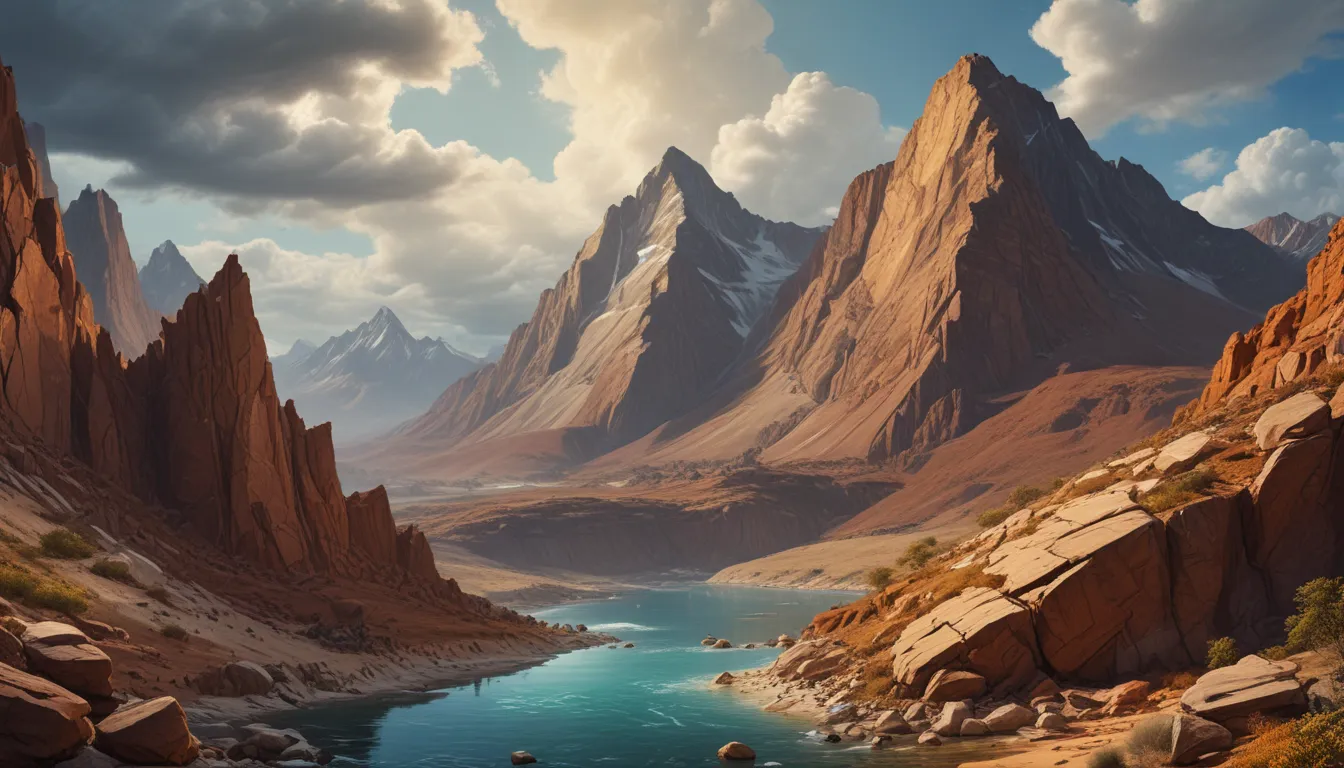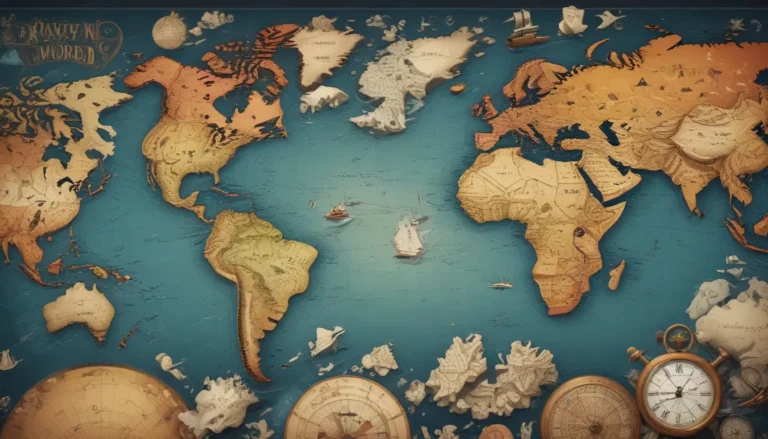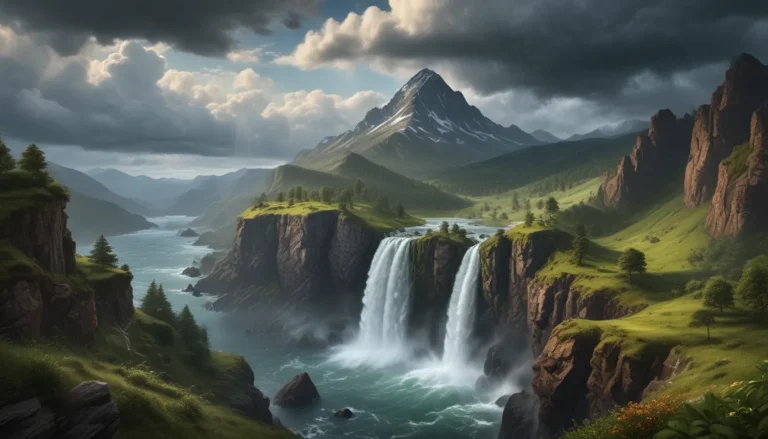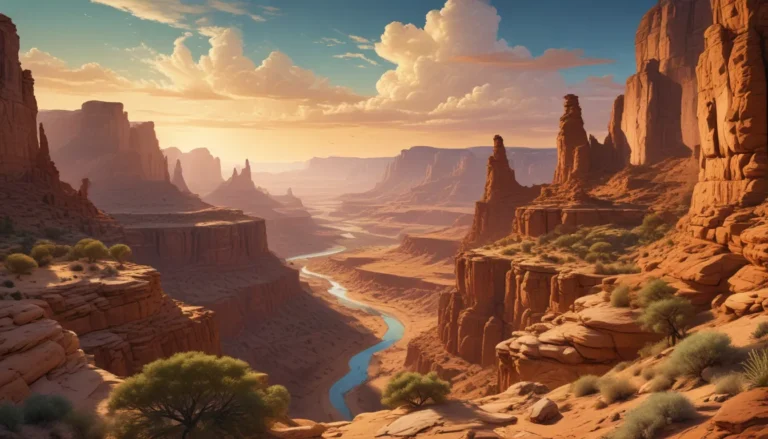A Note About Images: The images used in our articles are for illustration purposes only and may not exactly match the content. They are meant to engage readers, but the text should be relied upon for accurate information.
Welcome to the fascinating world of solifluction lobes, captivating natural wonders shaped by the intricate dance of freeze-thaw cycles and gravity. These slow-moving landforms, also known as solifluction tongues, offer valuable insights into the dynamic processes that shape our planet’s surface. From their unique formation to their impact on landscapes and ecosystems, solifluction lobes are a treasure trove of geological marvels waiting to be explored. Join us as we uncover eight intriguing facts about solifluction lobes, shedding light on their significance and implications in the realm of earth science.
Understanding Solifluction Lobes: Nature’s Masterpieces
Solifluction lobes, also referred to as solifluction tongues, are landforms that form in regions with permafrost or frozen ground. These lobes are created through the gradual movement of saturated soil downhill, driven by the alternating cycles of freezing and thawing. As the soil becomes liquefied, it flows slowly, shaping distinctive lobes or tongues of varying sizes and shapes.
The Marvel of Solifluction: Nature’s Artistry at Work
-
Formation of Solifluction Lobes: Solifluction lobes are formed by the gradual movement of soil and sediment down a slope, facilitated by freeze-thaw processes.
-
Unique Shapes: Depending on the geological features and conditions of an area, solifluction lobes can exhibit a wide range of shapes, from long, narrow tongues to rounded or fan-shaped formations.
-
Slow but Constant Movement: While the movement of solifluction lobes may seem imperceptible, it is a continuous process that shapes the landscape over time.
-
Debris Accumulation: As solifluction lobes flow downhill, they can pick up and transport debris and rocks, resulting in the formation of distinctive features within the lobes.
Exploring the Realm of Solifluction Lobes: Insights and Discoveries
- Solifluction lobes are commonly found in high-latitude regions with cold climates, such as Alaska, Siberia, Canada, and Scandinavia.
- These landforms play a crucial role in shaping the landscape, altering drainage patterns, creating terraced slopes, and influencing vegetation distribution.
- Solifluction lobes can pose challenges for infrastructure development in permafrost regions, requiring specialized engineering techniques for construction.
Solifluction Lobes: A Window into Earth’s Geological Past and Future
- Studying solifluction lobes provides valuable insights into permafrost environments, geomorphology, and the impacts of climate change on landscapes.
- These landforms offer a unique perspective on the complex interactions between climate, geology, and topography, shedding light on the ever-changing nature of Earth.
Embracing the Beauty of Solifluction Lobes: An Invitation to Explore and Learn
As you delve into the captivating world of solifluction lobes, take a moment to appreciate the intricate processes at play and the wonders they reveal about our planet’s surface. These geological features not only contribute to the beauty of various regions but also hold valuable lessons about soil erosion, sediment transport, and landscape evolution. By unraveling the mysteries of solifluction lobes, we gain a deeper understanding of the dynamic forces that shape our planet and the importance of preserving its natural beauty.
FAQs: Unveiling the Secrets of Solifluction Lobes
-
What is a Solifluction Lobe?
A Solifluction Lobe is a landform created by the gradual downslope movement of soil and sediment caused by freeze-thaw cycles and gravity. -
Where can Solifluction Lobes be found?
Solifluction Lobes are typically found in cold climate areas with permafrost, such as alpine regions and tundra landscapes. -
How are Solifluction Lobes formed?
Solifluction Lobes are formed when the upper layer of soil thaws, saturating the underlying permafrost layer and allowing the soil to flow downhill. -
What are the characteristics of Solifluction Lobes?
Solifluction Lobes often have a lumpy or lobed appearance, with distinct terracettes or steps on their surface. -
How do Solifluction Lobes impact the landscape?
Solifluction Lobes contribute to soil erosion, sediment transport, and the overall shaping of the landscape. -
Can Solifluction Lobes be harmful to human infrastructure?
Yes, the continuous movement of Solifluction Lobes can pose a threat to infrastructure, such as roads and buildings. -
Are there any other related landforms?
Other landforms related to Solifluction Lobes include solifluction terraces and patterned ground in cold climate areas. -
How can the study of Solifluction Lobes benefit us?
Studying Solifluction Lobes can enhance our understanding of climate, geology, and landscape evolution, helping predict and mitigate the impacts of climate change.
As we celebrate the marvels of solifluction lobes and their significant contributions to our understanding of Earth’s geology, let’s embrace the opportunity to learn and explore the wonders of nature’s artistry. With each discovery, we gain a deeper appreciation for the intricate processes that shape our planet and the beauty that surrounds us. So, join us on this journey of exploration and discovery, as we unveil the secrets of solifluction lobes and the mysteries they hold.






